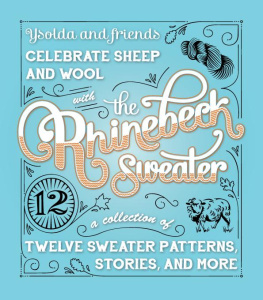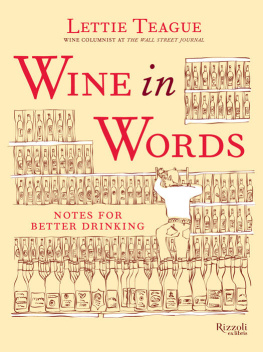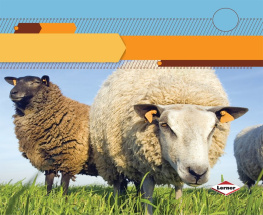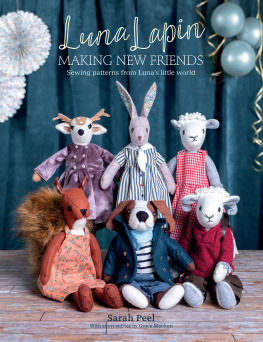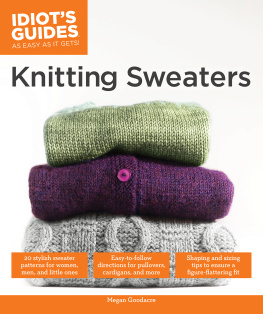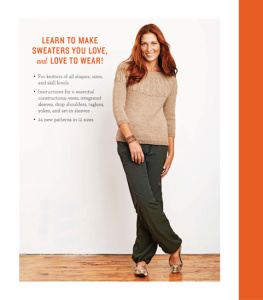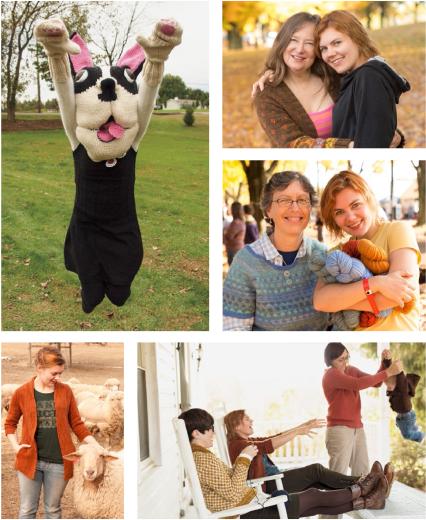Text and illustrations copyright 2013 Ysolda Teague
Individual patterns copyright 2013 by the respective designers
All photographs copyright 2013 Ysolda Teague except:
Page 29, Shelridge Barn: Lyn Gemmell
Pages 54 - 56, Ysolda wearing Pumpkin Ale: Thea Coughlin
Page 66, Basket of Briar Rose Fiber Yarn: Amy Peterman
Pages 81 - 83, Skeins ofVerdant Gryphon Yarn and dye bath: Gryphon Corpus
Page 90, Jill Draper and sheep farmer: Richard Buckner
TECHNICAL SUPPORT
Confused about something in one of the patterns, or have a question? The support page on my website contains links to useful resources, tutorials and frequently asked questions. www.ysolda.com/support
UPDATES
This file is version 1.2. In the event of any erratta updates will be sent via Ravelry. If you're not sure whether you have the current file please check www.ysolda.com/books/the-rhinebeck-sweater
All rights reserved. No part of this book may be reproduced or transmitted in any form or by any means, electronic, mechanical, photocopying, recording or otherwise, without prior permission from the publisher. The complimentary digital version of this book is provided for your convenience and must not be resold or distributed separately from the printed book.
Photography: Ysolda Teague
Graphic Design: Julie Levesque, www.symposi.com
Technical Editor: Kristi Porter
Copy Editor: Jo Kelly
f,]J^c>lda anxyrimclfe CELEBRATE SHEEP

TWELVE SWEATER PATTERNS,
STORIES, AND MORE
| |
|
|
|
|
FEATURES |
| |
|
|
| |
|
|
| PATTERN DIRECTIONS | |
|
|
| |
|
| |
| Pippin |
|
| |
|
| |
| |
|
| |
| |
|
INTRODUCTION by Ysolda Teague
The New York State Sheep and Wool Festival popularly referred to as Rhinebeck has taken place on the third weekend of October at the Dutchess County Fairgrounds in Rhinebeck, New York since 1972. Now attracting more than 40,000 visitors over the weekend, it's a celebration of all things sheep and wool and a dream destination for knitters from all over the world.
I knew none of that when I first encountered the Rhinebeck sweater being discussed on blogs. The exact details didn't matter. What drew me in was the palpable excitement about knitting a sweater under pressure of a deadline, sharing your progress with lots of other people doing the same thing, and finally showing it off to people who would really get it. So often as knitters we worry that what we make might look a little too homemade, that it won't blend into the crowd, that we're wearing too many hand knits at once. Those concerns were irrelevant when choosing a Rhinebeck sweater: the most eye-catching showcase for the knitter's skills possible. I wanted to be part of that.
A few years later, when I finally crossed the Atlantic and made it to Rhinebeck myself, I was thrilled to find that I was already a part of the celebration. There was no greater honour than seeing that other people had chosen one of my patterns as their Rhinebeck sweater. I spent the weekend overwhelmed and excited; photographing everyone I saw wearing one of my designs, and every cute animal I could find.
The barns were filled with such an array of yarns, in fibres I'd never heard of before, and I wanted to try everything. Paralysed by indecision I came home with a random pile of single skeins, all of them delightful and ideal for the work I was doing on what would become the Whimsical Little Knits series. But I was left with a lingering sense of regret. Wouldn't it have been nice to make a Rhinebeck sweater in yarn from the festival? If only I'd committed to something.
6 | INTRODUCTION
Over the years my pile of precious skeins of souvenir yarns grew gathered from visits to festivals, farms, dyers and other small producers all over Europe and North America. I loved dipping into that trunk for a special shawl or hat, but there is nothing I like knitting, or designing, more than sweaters. There was nothing in the trunk for that, and I found myself wishing that I'd bought a gift for my future self, as Clara Parkes so perfectly puts it. I wanted a sweater filled with happy memories, made from yarn with a fascinating story.
The Rhinebeck sweater I wore that first year wasn't a sweater at all. Ravelry meet-ups at Rhinebeck had become a gathering place for the community, a chance to meet online friends in real life, and, of course, to share what you'd knit.
(continue)
8 | INTRODUCTION
Knitters were excited to meet the team behind their beloved website, who had become good friends of mine, but they often asked where the mascot, Bob the Boston Terrier was. Pets aren't allowed at the festival, but I started to think that Bob needed a stand-in for public appearances. A week before Rhinebeck Id given up on finishing a sweater but I had an idea. I was staying with Gudrun Johnston and her family and I dragged her and her kids around every craft and toy store in the area as I amassed black and white yarn, a plastic ball, paint, stuffing and wire. No one knew it was me inside the giant head and paw mittens, but everyone at the meet-up wanted to have their picture taken with Bob. It was one of my silliest ideas, but people really got it, and I knew then just how special this community of knitters I'd found myself among was.
This book, like most of my work, grew slowly out of conversations with other designers. It started years ago with the idea that it would be fun not just to knit Rhinebeck sweaters, but to team up and design them. It took five books, and a few years, before I felt like that was a project I could take on and I started casually mentioning the idea to friends. Fortunately they were as excited as I was, and the festival in 2012 was the perfect chance to do a photo shoot with everyone in the same place. It was important to me that the designers would model their own sweaters: I asked them to design the sweater they would want to wear and show off at the festival. The resulting garments are as beautiful as their happy smiles and I hope you'll want to show them off as well.
This book is centred around one festival, which might be local to you or unimaginably far away, but I hope it will encourage you to seek out others. The idea of shopping locally for yarn assumes that everyone has locally-made yarn available and that no one ever travels, but no matter where you live (or where you visit) you may be surprised
by what is out there when you start looking. You might find a dyer with an instinctive colour sense, or a mill that's been in operation for decades. Maybe there's a shepherd who knows the whole flock by name, or a spinner who only sells at one farmers' market. The yarns will all be special to the people who made them, and they'll all have a story for you to continue. When you find them, I hope you won't be put off by a lack of pattern support, and that you'll fill your arms with enough to really do something with.
Next page
